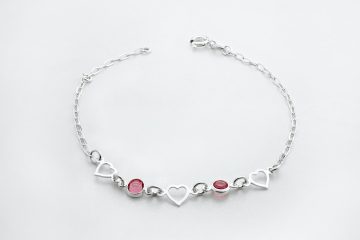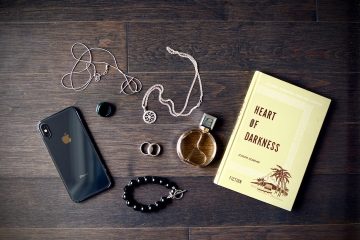Introduction
When it comes to accessorizing, Pandora leather bracelets have gained immense popularity among jewelry enthusiasts. These stylish bracelets offer a unique and personalized way to showcase your individuality. However, many people are unsure whether wearing Pandora leather bracelets is suitable for aquatic adventures. Can these bracelets withstand the challenges presented by water activities? In this article, we will delve into the truth about wearing Pandora leather bracelets in aquatic adventures, exploring their durability, maintenance, and overall suitability for water-related activities.
1. Understanding Pandora Leather Bracelets
Pandora leather bracelets have become synonymous with a blend of elegance and personalization. These accessories feature a woven leather band with a unique clasp that allows for the attachment of various charms, reflecting the wearer’s personality and style. With a wide range of charms available, Pandora bracelets have become a popular choice for self-expression and storytelling.
2. The Durability of Pandora Leather Bracelets
One common concern when it comes to wearing leather bracelets in water is their durability. Leather is a natural material that can be prone to damage when exposed to excessive moisture. However, Pandora leather bracelets are designed to withstand everyday wear and tear, including occasional contact with water.
The leather used in Pandora bracelets undergoes a special treatment process, making it more resistant to water damage. It is important to note, though, that while these bracelets are water-resistant, they are not entirely waterproof. Extended exposure to water, particularly saltwater or chlorinated water, can still have an impact on their longevity.
3. Maintaining Pandora Leather Bracelets in Water
To ensure the longevity of your Pandora leather bracelet during aquatic adventures, it is essential to take proper care and maintenance measures. After wearing your bracelet in water, gently wipe it with a soft, dry cloth to remove any moisture or residue. Avoid using harsh chemicals or abrasive materials, as they can damage the leather and the charms.
Additionally, it is advisable to remove your Pandora leather bracelet before engaging in water activities, such as swimming or diving. This precautionary measure helps minimize the exposure of the bracelet to water and potential damage caused by prolonged submersion.
4. Choosing the Right Charms for Aquatic Adventures
While the leather bracelet itself may be more resilient to water, it is crucial to consider the charms you choose to adorn it with when participating in aquatic activities. Some charms may be more susceptible to water damage than others.
Opting for charms made from sterling silver, stainless steel, or other materials resistant to water can help ensure their longevity. It is advisable to avoid charms made from materials like wood or pearls, as they may be more delicate and prone to damage in water.
5. Alternatives to Wearing Pandora Leather Bracelets in Water
If you are an avid water enthusiast who wants to avoid any potential risks to your Pandora leather bracelet, there are alternative options to consider. Pandora offers a range of bracelets made from materials like sterling silver, stainless steel, and silicone that are specifically designed for water activities.
These alternative bracelets offer the same customizable charm options as the leather bracelets but are more suited to withstand the challenges presented by water. They provide peace of mind, allowing you to freely engage in aquatic adventures without worrying about potential damage to your beloved Pandora accessories.
6. Striking a Balance: Wearing Pandora Leather Bracelets Safely
While it is advisable to exercise caution when wearing Pandora leather bracelets in water, it is still possible to enjoy aquatic adventures while adorning these stylish accessories. By following the maintenance tips mentioned earlier, removing the bracelet during water activities, and choosing appropriate charms, you can strike a balance between style and practicality.
Conclusion
In conclusion, Pandora leather bracelets can be worn during aquatic adventures, but it is important to take certain precautions and exercise proper maintenance. These stylish accessories are designed to withstand water exposure to a certain extent, but extended exposure to water can still impact their durability. By being mindful of the materials used in the charms and considering alternative bracelet options, you can ensure the longevity of your Pandora leather bracelet while enjoying water-related activities.
FAQs
1. Can I wear my Pandora leather bracelet while swimming in a pool?
While Pandora leather bracelets are designed to withstand occasional contact with water, extended exposure to chlorinated water can affect their durability. It is advisable to remove your bracelet before swimming in a pool to avoid potential damage.
2. Can I shower with my Pandora leather bracelet on?
It is generally recommended to remove your Pandora leather bracelet before showering. The prolonged exposure to water and soap can impact the leather’s quality and the overall longevity of the bracelet.
3. How often should I clean my Pandora leather bracelet after water exposure?
After wearing your Pandora leather bracelet in water, it is recommended to gently wipe it with a soft, dry cloth to remove any moisture or residue. This should be done immediately after water exposure to prevent any potential damage.
4. Can I wear my Pandora leather bracelet while participating in water sports?
Engaging in water sports that involve intense water activities, such as jet skiing or wakeboarding, is not advisable while wearing a Pandora leather bracelet. These activities can subject the bracelet to significant impact and strain, which may result in damage.
5. Are there any specific care instructions for Pandora leather bracelets?
To maintain the quality and longevity of your Pandora leather bracelet, it is important to keep it away from excessive heat, direct sunlight, and harsh chemicals. When not in use, store it in a cool and dry place, preferably in a jewelry box or pouch.




